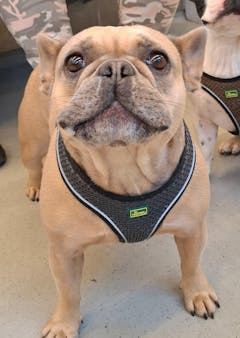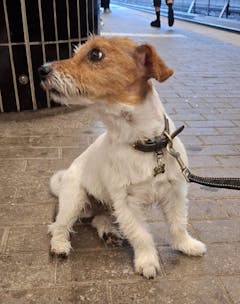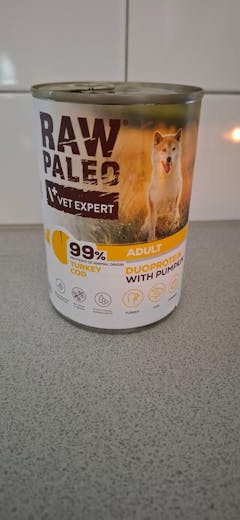Viktkontroll för Hundar
Viktkontroll för Hundar: Vägen till ett Längre och Friskare Liv
Övervikt och fetma är ett växande problem bland hundar och kan leda till en rad allvarliga hälsoproblem. Att hjälpa din hund att nå och bibehålla en hälsosam vikt är en av de viktigaste åtgärderna du kan vidta för att förlänga dess liv och förbättra dess livskvalitet. På Zoostar.se erbjuder vi ett omfattande sortiment av produkter för viktkontroll för hundar, inklusive specialutvecklade foder som är designade för att effektivt stödja viktminskning och långsiktig viktbalans.
Varför Är Övervikt Farligt för Din Hund?
Övervikt är inte bara en estetisk fråga; det är en sjukdom som kan ha förödande konsekvenser för din hunds hälsa:
- **Ledproblem:** Extra vikt belastar lederna och ökar risken för artros och andra ortopediska problem, vilket leder till smärta och minskad rörlighet. Vi har även specialiserat foder för led- och rörelsehälsa hund.
- **Diabetes:** Övervikt ökar risken för utveckling av diabetes mellitus. Se vårt foder för diabeteskontroll hund för hundar med denna diagnos.
- **Hjärt- och kärlsjukdomar:** Hjärta och lungor måste arbeta hårdare, vilket kan leda till högt blodtryck och hjärtsjukdomar. Upptäck vårt foder för hjärtsjukdom hund vid behov.
- **Andningsproblem:** Fettansamlingar kan begränsa lungkapaciteten.
- **Kortare livslängd:** Studier visar att överviktiga hundar lever i genomsnitt upp till två år kortare.
- **Ökad risk vid operationer/narkos:** Större risk för komplikationer.
- **Minskad livskvalitet:** Mindre aktivitet, lek och mer smärta.
- **Hud- och pälssproblem:** Svårigheter att sköta hygien kan leda till hudinfektioner. Vi erbjuder också foder för hudhälsa hund.
Hur Vet Jag om Min Hund Är Överviktig?
Ett enkelt sätt att bedöma din hunds vikt är med Kroppskonditionspoäng (BCS). Du ska lätt kunna känna revbenen under ett tunt fettlager, men de ska inte vara synliga (undantag smala raser). Din hund ska ha en tydlig midja när du tittar ovanifrån och en uppdragen buklinje från sidan. Om du är osäker, konsultera alltid din veterinär.
Foder för Viktkontroll: Nyckeln till Framgång
Ett specialanpassat foder för viktkontroll är designat för att hjälpa din hund att gå ner i vikt på ett säkert och hälsosamt sätt:
- **Lägre Kaloriinnehåll:** Reducerat fettinnehåll för att minska energiintaget utan att hunden känner sig hungrig.
- **Högt Fiberinnehåll:** Ger mättnadskänsla och stödjer en hälsosam matsmältning, viktigt för hundar med mage- och tarmsjukdomar.
- **Högt Proteininnehåll:** Bibehåller muskelmassa under viktminskningen.
- **Berikat med Vitaminer & Mineraler:** Säkerställer att hunden får all nödvändig näring trots minskat kaloriintag.
- **Tillsatser för Hälsa:** Innehåller ofta L-Karnitin för fettförbränning, samt glukosamin och kondroitin för ledhälsa, vilket är extra viktigt för överviktiga hundar.
På Zoostar.se hittar du både veterinärfoder för viktkontroll (ofta rekommenderat av veterinärer för mer betydande viktminskning) och "light"-foder för underhållsvikt eller mindre övervikt.
Mer än Bara Foder: Ett Helhetsgrepp för Viktkontroll
För framgångsrik och långsiktig viktkontroll krävs en kombination av faktorer:
- **Noggrann Portionering:** Väg alltid hundens mat med en köksvåg och följ rekommendationerna baserade på hundens idealvikt, inte nuvarande vikt.
- **Kontrollerat Godis:** Minimera godis och matrester från bordet. Välj kalorisnåla alternativ som små bitar morot eller gurka.
- **Anpassad Motion:** Öka gradvis fysisk aktivitet. Börja lugnt och öka intensiteten i takt med att hundens kondition förbättras. Simning är ett skonsamt alternativ för lederna.
- **Regelbundna Veterinärbesök:** Få en professionell bedömning, uteslut medicinska orsaker till viktuppgång, och få en skräddarsydd plan. Veterinären kan också rekommendera specifika veterinärfoder vid underliggande problem som njursjukdom, leversjukdom, urinvägsproblem, eller om hunden behöver hypoallergent foder.
- **Mental Stimulans:** En aktiverad hund äter mindre av tristess. Använd aktiveringsleksaker och lek för att hålla hunden sysselsatt. Detta kan även hjälpa hundar med stress och nervositet.
- **Konsekvens:** Alla i hushållet måste vara engagerade i planen.
Att bibehålla en hälsosam vikt är en investering i din hunds framtid. Utforska vårt sortiment av viktkontrollfoder för hundar på Zoostar.se och ge din bästa vän de bästa förutsättningarna för ett långt, friskt och lyckligt liv! Glöm inte att god tandhälsa är viktigt, och vi har även foder för tandhälsa hund.
Vanliga frågor om Viktkontroll för Hundar
Här besvarar vi några av de mest frekventa frågorna vi får angående viktkontroll för hundar.
Hur vet jag om min hund är överviktig och varför är det farligt?
Att identifiera övervikt hos hundar är avgörande för deras hälsa, då fetma kan leda till en rad allvarliga hälsoproblem och förkorta hundens livslängd. Hur vet jag om min hund är överviktig? Det finns flera sätt att bedöma om din hund ligger på en hälsosam vikt, även om det bästa alltid är att konsultera en veterinär. 1. Kroppskonditionspoäng (BCS - Body Condition Score): Detta är det mest använda verktyget av veterinärer och ett utmärkt sätt att själv bedöma din hunds vikt hemma. Det finns skalor från 1 till 5 eller 1 till 9, där mitten representerar idealvikt. Här är en förenklad version för en skala 1-5: - För smal (1/5): Revben, ryggrad och bäckenben är tydligt synliga. Ingen fettvävnad känns. - Underviktig (2/5): Revben lätt synliga. Ryggrad och bäckenben synliga men mindre uttalade. Minimal fettvävnad. - Idealvikt (3/5): Revben ska vara lätta att känna men inte synliga (för de flesta raser). Midjan ska vara tydligt markerad när du tittar på hunden ovanifrån (timglasform). Buklinjen ska vara uppdragen när du ser hunden från sidan. - Överviktig (4/5): Revben känns med viss svårighet. Midjan är svagt markerad eller saknas helt. Buklinjen är mindre uppdragen eller hänger. Fettansamlingar kan ses över svansroten och ryggen. - Fetma (5/5): Revben kan inte kännas alls. Ingen midja eller buklinje. Tydliga fettansamlingar över hela kroppen, särskilt runt nacken, ryggen, svansroten och vid ljumskarna. 2. Visuell inspektion och palpation (känna): - Känn revbenen: Placera handflatorna på din hunds sidor, strax bakom frambenen. Du ska lätt kunna känna revbenen under ett tunt lager fett. Om du måste trycka för att känna dem, är din hund troligen överviktig. Om du ser revbenen tydligt (förutom hos väldigt smala raser som greyhound), är den underviktig. - Kolla midjan: Titta på din hund ovanifrån. Den ska ha en synlig ”midja” mellan bröstkorgen och höfterna. Om den är rak, eller buktar ut, är hunden överviktig. - Kolla buklinjen: Titta på din hund från sidan. Buklinjen ska ”dra uppåt” från bröstkorgen till bakbenen. Om den hänger rakt eller neråt, är det ett tecken på övervikt. 3. Vägning: Regelbunden vägning hemma eller hos veterinären kan hjälpa dig att upptäcka viktuppgång i tid. En plötslig eller stadig viktuppgång är en varningssignal. Varför är övervikt farligt för hundar? Övervikt och fetma är inte bara en fråga om estetik; det är en allvarlig sjukdom som kan förkorta hundens liv och drastiskt försämra dess livskvalitet. Här är några av de vanligaste riskerna: 1. Ledproblem och artros: Extra vikt belastar lederna och leder till snabbare slitage av brosket, vilket ökar risken för artros, diskproblem och andra ortopediska problem. Detta leder till smärta, stelhet och minskad rörlighet. 2. Diabetes mellitus: Övervikt ökar risken för insulinresistens och utveckling av typ 2-diabetes hos hundar. 3. Hjärt- och kärlsjukdomar: Hjärta och lungor måste arbeta hårdare för att försörja en större kropp, vilket kan leda till högt blodtryck och hjärtsjukdomar. 4. Andningsproblem: Fettansamlingar runt bröstkorgen och i buken kan begränsa lungornas expansionsförmåga, vilket leder till andfåddhet, särskilt i varmt väder eller vid ansträngning. Brakycefala raser (korthuvade) är extra känsliga. 5. Kortare livslängd: Studier har visat att överviktiga hundar lever i genomsnitt upp till två år kortare än hundar med idealvikt. 6. Ökad risk vid operationer/narkos: Överviktiga hundar har högre risk för komplikationer under operationer och återhämtning på grund av ökad belastning på vitala organ och svårare att reglera kroppstemperaturen. 7. Minskad livskvalitet: Överviktiga hundar är ofta mindre aktiva, leker mindre, och kan uppleva smärta, vilket leder till en sämre livskvalitet. 8. Hud- och pälssproblem: Överviktiga hundar kan få svårt att sköta sin hygien, vilket kan leda till hudvecksinfektioner och andra dermatologiska problem. Att ta tag i hundens vikt är en av de viktigaste sakerna du kan göra för att säkerställa ett långt, friskt och lyckligt liv för din bästa vän. På Zoostar.se har vi ett stort urval av foder för viktkontroll, inklusive veterinärfoder för hundar med övervikt.
Vilken typ av foder är bäst för viktminskning och viktkontroll hos hundar?
Att välja rätt foder är grundläggande för en framgångsrik viktminskning och långsiktig viktkontroll hos hundar. Viktminskningsfoder är speciellt formulerade för att hjälpa hunden att gå ner i vikt på ett säkert och effektivt sätt, samtidigt som den får i sig alla nödvändiga näringsämnen. Vilken typ av foder är bäst? De bästa fodren för viktminskning och viktkontroll har specifika egenskaper: 1. Lägre kaloriinnehåll: Detta är den viktigaste aspekten. Fodret måste ha färre kalorier per portion än ett standardfoder. Detta uppnås ofta genom att minska fetthalten och/eller öka fiberhalten. 2. Högt fiberinnehåll: Fibrer är avgörande i viktminskningsfoder. De ger en känsla av mättnad, vilket hjälper hunden att känna sig nöjd trots att den äter färre kalorier. Fibrer bidrar också till en sund tarmfunktion. 3. Högt proteininnehåll (av god kvalitet): Även under viktminskning är det viktigt att bibehålla muskelmassa. Ett högt, men balanserat, proteininnehåll hjälper till att bevara musklerna samtidigt som fettmassan reduceras. Protein bidrar också till mättnad. 4. Berikat med vitaminer och mineraler: När kaloriintaget minskas är det extra viktigt att säkerställa att hunden fortfarande får i sig alla nödvändiga vitaminer och mineraler för att undvika näringsbrister. 5. Tillsatser för ämnesomsättning och ledhälsa: - L-Karnitin: En aminosyra som hjälper kroppen att omvandla fett till energi, vilket kan stödja viktminskning. - Glukosamin och Kondroitin: Mycket viktigt för överviktiga hundar då deras leder belastas hårt. Dessa ämnen bidrar till ledhälsa och kan lindra obehag. - Omega-3 fettsyror (EPA/DHA): Har antiinflammatoriska egenskaper som kan vara fördelaktiga för leder och allmän hälsa. Typer av viktkontrollfoder: - Viktminskningsfoder/Veterinärfoder för viktkontroll: Dessa är de mest effektiva fodren för att aktivt minska vikten. De är ofta del av en större behandlingsplan och säljs ofta som veterinärfoder. De har en noggrant kontrollerad sammansättning för att säkerställa säker och effektiv viktminskning. Dessa foder kan ibland kräva rekommendation från veterinär. - Light-foder/Viktkontrollfoder för underhåll: Dessa foder är avsedda för hundar som är lätt överviktiga eller som har nått sin idealvikt och behöver ett foder för att bibehålla den. De har lägre kalorier än ett standardfoder men är inte lika drastiska som ett rent viktminskningsfoder. Viktigt att tänka på: 1. Konsultera veterinär: Innan du påbörjar en viktminskningsresa för din hund, konsultera alltid din veterinär. De kan utesluta medicinska orsaker till viktuppgång, sätta upp ett realistiskt mål och rekommendera det mest lämpliga fodret och aktivitetsnivån. 2. Noggrann portionering: Väg alltid hundens mat! Använd en köksvåg för att säkerställa att du ger exakt rätt mängd enligt tillverkarens rekommendationer och veterinärens anvisningar. Att bara höfta med en skopa är en vanlig orsak till att viktminskning misslyckas. 3. Ingen mat från bordet/för mycket godis: Dessa extra kalorier kan snabbt sabotera en diet. Om du måste ge godis, använd kalorisnåla alternativ eller dra av motsvarande mängd från dagens foder. 4. Ökad motion: Foderbyte måste kombineras med ökad fysisk aktivitet för bästa resultat. Börja försiktigt och öka gradvis. På Zoostar.se har vi ett stort urval av foder för viktkontroll för hundar, inklusive effektiva veterinärfoder och light-alternativ för olika behov. Vi erbjuder även foder som stödjer relaterade hälsoproblem som foder för led- och rörelsehälsa hund.
Vilka andra faktorer än foder är viktiga för framgångsrik viktkontroll hos hundar?
Även om foder är en grundpelare i viktkontroll för hundar, är det bara en del av lösningen. För att uppnå och bibehålla en hälsosam vikt krävs ett helhetsgrepp som inkluderar flera andra viktiga faktorer. Här är de viktigaste komplementen till ett anpassat foder: 1. Regelbunden och anpassad motion: Ökad fysisk aktivitet är avgörande för att bränna kalorier och bygga muskler. - Anpassa motionen: Börja försiktigt med korta, lugna promenader om din hund är mycket överviktig eller har ledproblem. Öka gradvis intensiteten och varaktigheten. - Variation: Promenader är bra, men tänk även på lek, simning (skonsamt för lederna), eller andra aktiviteter som din hund tycker om. - Rutin: En daglig rutin med motion är viktig för att säkerställa att hunden får tillräcklig aktivitet. 2. Noggrann portionering och vägning av foder: Detta kan inte betonas nog. - Använd våg: Mätskålar är sällan exakta. En köksvåg garanterar att du ger exakt den rekommenderade mängden foder. - Följ anvisningar: Följ noggrant utfodringsguiden på foderförpackningen eller veterinärens specifika instruktioner. Dessa rekommendationer är baserade på hundens idealvikt, inte nuvarande vikt, för att underlätta viktminskning. 3. Kontroll av godis och extras: Detta är ofta en stor bov när hundar blir överviktiga. - Minska eller eliminera godis: Var extremt restriktiv med godis och matrester från bordet. Kom ihåg att även små bitar lägger till betydande kalorier. - Kalorisnåla alternativ: Om du måste ge godis, välj kalorisnåla alternativ som små bitar morot, gurka, äpple (utan kärnor) eller speciella light-godbitar. Dra av motsvarande mängd från dagens foder. - Använd maten som godis: Vissa av hundens dagliga foderkulor kan användas som belöning under träning. 4. Regelbundna veterinärbesök och uppföljning: - Utvärdering: Veterinären kan göra en professionell bedömning av hundens kroppskondition, utesluta underliggande medicinska orsaker till viktuppgång (som hypotyreos), och sätta upp en skräddarsydd viktminskningsplan. - Uppföljning: Regelbundna återbesök till veterinären för vägning och justering av foderintag är avgörande för att följa framstegen och vid behov justera planen. 5. Aktivering och mental stimulans: - Motverka tristess: En uttråkad hund kan äta av tristess. Ge hunden leksaker, aktiveringsleksaker och regelbunden mental stimulans för att hålla den sysselsatt. - Långsamma matskålar/aktiveringsleksaker: Använd skålar som gör att hunden äter långsammare eller leksaker som portionerar ut fodret gradvis. Detta kan bidra till mättnad och minska hetsätning. 6. Alla i hushållet måste vara medvetna: Se till att alla som interagerar med hunden (familjemedlemmar, vänner, hundvakter) är medvetna om viktminskningsplanen och följer reglerna för utfodring och godis. En konsekvent strategi är nyckeln. 7. Tålamod och konsekvens: Viktminskning tar tid och kräver tålamod. Det är en långsiktig process som kräver engagemang och konsekvens. Belöna framsteg och fokusera på hälsan snarare än snabba resultat. Genom att kombinera ett lämpligt foder från Zoostar.se med dessa livsstilsförändringar ger du din hund de bästa förutsättningarna för att nå och bibehålla en hälsosam vikt, vilket i sin tur leder till ett friskare, gladare och längre liv. Kom ihåg att Zoostar.se även har specialfoder för hundar med andra besvär som foder för ledsjukdom eller foder för stress/nervositet, som ibland kan vara relaterade till övervikt. Konsultera alltid din veterinär vid hälsoproblem.
Husdjursprodukter Online
Utforska fler populära hundkategorier
Här hittar du många av våra mest efterfrågade kategorier – från hundfoder och godis till tillbehör, vård och aktivering.
Ledande Fodertillverkare
Populära hundfodermärken
Här hittar du våra mest populära hundfoder – från spannmålsfritt till veterinärfoder. Klicka på ett varumärke för att se hela sortimentet.






